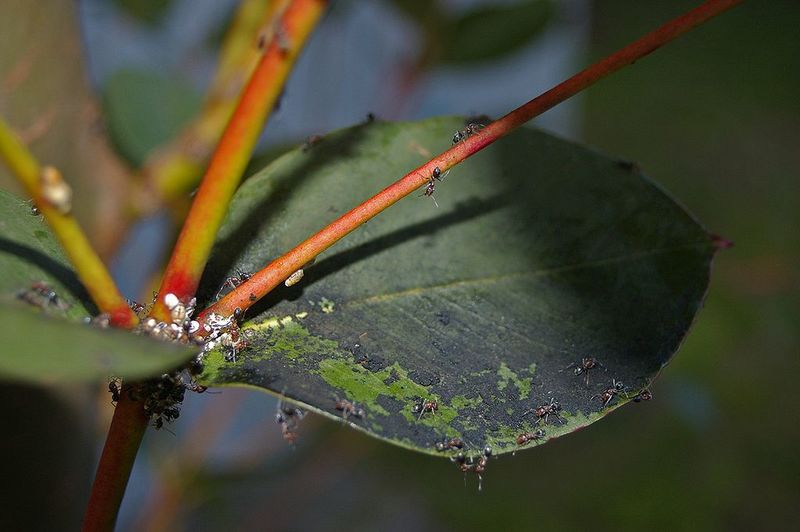Have you been dealing with a lot of molds lately, that knowing how to treat sooty mold has become evidently necessary? Worry not, for in this article, we’re going to talk about exactly how you can safely and adequately deal with it!
Sooty mold can be found primarily outside of your home. Though they are commonly found on leaves, sooty molds can also be observed on outdoor furniture, fences, stones, and practically anything you’ve placed outside.

If you’re unsure whether sooty mold is definitely what your backyard is suffering from, these molds have a very definitive look. Just like the soot you see inside your house’s chimney or on a car’s exhaust tube, sooty molds are black and cause damage like pests.
Treatment Of Sooty Molds
Sooty mold looks different from the regular mold and requires other treatments to completely alleviate compared to the regular ones that we usually see. Here are some steps you can follow in dealing with these sooty molds.
Step #1. Identify and eradicate the insects causing the mold
The moment you confirm that the problem is sooty mold, you must identify what is causing it. Sooty molds on plant leaves and outdoor furniture are formed on a sugary liquid called honeydew, which is excreted by insects as waste.
Before dealing with the mold itself, you first need to make sure that the ones producing its resources are gone so you can address the problem just once and for all. For the honeydew-producing insects, there are usually three: aphids, whitefly, or scale.
Widespread sooty molds will make the cause identification easier since mold means more insects, which is easier to spot. Once you’ve found and identified them, obtain a suitable insecticide from an agricultural shop, wear your PPEs, and address the insects.
If you feel like you’ll need a professional, here’s how to write a mold report for you to properly communicate with them.
Step #2. Wash the infection with soap
After dealing with the insects, you now start dealing with the sooty molds themselves. If you’ve observed these molds, they are way different from the regular ones you see on bread or below your sink.
Sooty molds are like hardened flakes of black scales that stick too much on your plant or furniture. That is what makes it problematic for plants because while they don’t directly kill off your plants, sooty molds blocking the sunlight hinder the leaves from making food.
Removing the hardened sooty mold forcefully can cause damage and dents, so we recommend doing it bit by bit, patiently. First, create a solution of insecticidal soap for leaves or wooden structures and detergent with bleach for plastic ones.
Slowly pour the soap solution on the infected areas and let it soak for about 10 minutes to soften molds.
Step #3. Rinse the soap and mold off
When the ten minutes is up, you can then rinse off the soap solution. If the infected areas are soft leaves, you might want to be as gentle as possible so that you don’t end up killing your plant along with the molds.
If the mold hasn’t come off after one washing, you can repeat the process the next day. If it’s a soft plant, so that it would have time to breathe, repeat until all the molds are gone.
For complex objects or sturdy grown-up plants, you can repeat the process readily afterward.
For sturdy structures like fences and furniture, you can scrub the molds after soaking them with soap to hasten the cleansing. Always make sure that you wear your gloves and respirators when you’re working with insecticides and bleach.
If you’re curious why molds are always around, here are the causes of mold outside the house.
What can you use to kill sooty molds?
Killing sooty molds start with killing what’s causing them. While such garden insects are helpful to other organisms and practically don’t cause any significant harm to humans, their proliferation around your home and properties causes problems that would have to be dealt with.
Sooty molds can be addressed by removing the reason for them to exist on your property in the first place. In the instance that they’re already in and causing problems, you can use insecticidal soap, detergent, and bleach accordingly.
You can also add pressurized water to rinse the infected area for faster mold removal for solid surfaces.
Is there a natural remedy for sooty molds?
If we’re talking about a natural remedy for sooty molds, then the answer would be time. After removing the source of the honeydew where the molds start and continue to grow, you’ll need to wait for the molds to disappear.
When their food source is gone, these sooty molds will naturally stop populating. If you’d instead let natural order deal with the rest, either rain and natural weathering will carry these molds away, or leaves infested will just fall off and get replaced with new ones.
Conclusion
Dealing with outdoor things leads you to know how to treat sooty mold, which you’ve just discovered. Just like any problem, it asks that you cut off the cause and possibly continue spreading and then clean up the problem already done.
